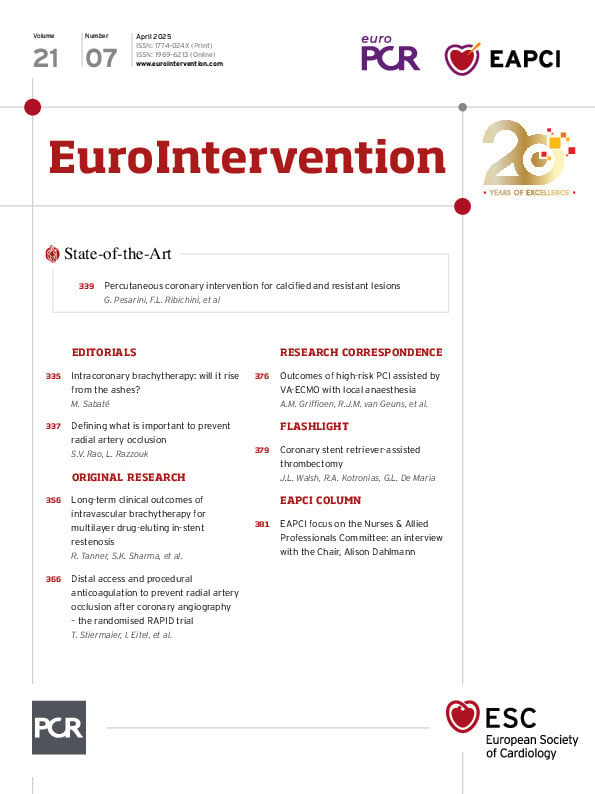Abstract
Background: Multilayer in-stent restenosis (ISR) remains a clinical challenge. Intravascular brachytherapy (IVBT) offers a “metal-free” treatment modality for multilayer drug-eluting stent (DES)-ISR; however, long-term outcome data on IVBT safety and efficacy are lacking.
Aims: We sought to compare 3-year clinical outcomes between patients treated with IVBT and those treated with a non-IVBT strategy.
Methods: Patients treated for multilayer DES-ISR (≥2 layers) at Mount Sinai Hospital (2012-2019) were included for analysis. The primary outcome was major adverse cardiac events (MACE), a composite of all-cause death, target lesion revascularisation and myocardial infarction, at 3-year follow-up.
Results: A total of 647 patients (mean age 66.6±9.9 years, 25.5% female) were included: 453 patients (70%) were treated with IVBT and 194 patients (30%) with a non-IVBT strategy. Baseline characteristics were similar, except for IVBT-treated patients having a higher incidence of prior coronary artery bypass grafting. The IVBT group had a lower mean SYNTAX score (11.9±10.7 vs 14.2±11.3; p=0.028) and were significantly less likely to receive a DES (0.4% vs 25.8%; p<0.001). At 3-year follow-up, the incidence of MACE was lower in the IVBT-treated group compared to the non-IVBT group (propensity score-adjusted analysis: 39.5% vs 47.8%; hazard ratio 0.73, 95% confidence interval: 0.53-0.99; p=0.044). There were no significant differences between the incidence of the individual components of MACE in each group.
Conclusions: Multilayer DES-ISR is associated with a high rate of adverse outcomes at 3-year follow-up. Treatment with IVBT was associated with a lower rate of MACE compared to treatment with a non-IVBT strategy at long-term follow-up.
Sign up for free!
Join us for free and access thousands of articles from EuroIntervention, as well as presentations, videos, cases from PCRonline.com

